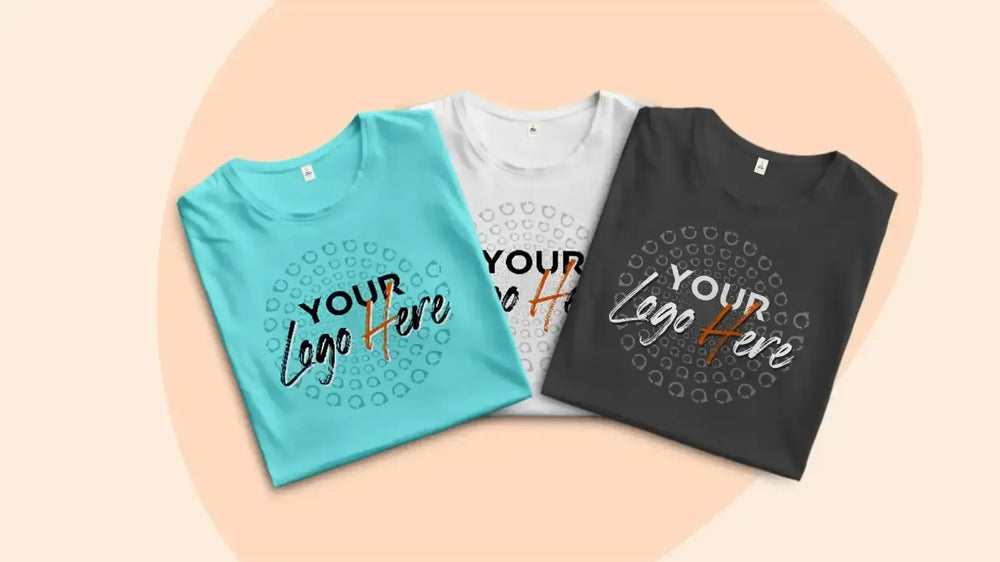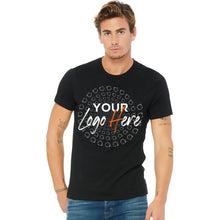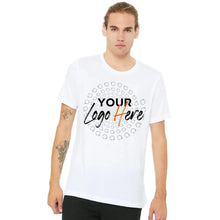¿Qué es la impresión digital DTG (Directo a prenda)?

La impresión directa sobre prenda (DTG) es una tecnología de impresión moderna ampliamente utilizada para la impresión de prendas personalizadas. Es una de las técnicas de impresión más modernas y tecnológicas que rápidamente se impuso en el mercado de la impresión. Desde su fundación en 2004, ha evolucionado significativamente y, hoy en día, existe una gama de impresoras modernas que crean resultados de impresión inimaginables para los proveedores de servicios de impresión personalizada.
Para aquellos interesados en aprender más sobre esta tecnología de impresión ultra inteligente, hemos compilado esta guía sobre la impresión directa sobre prenda (DTG).
Historia de la impresión directa sobre prenda
La impresión directa sobre prenda (DTG) se reconoció por primera vez como una valiosa tecnología de impresión en 2004. Hasta entonces, los impresores comerciales dependían de la serigrafía para la mayoría de los pedidos de ropa personalizada y otros productos. La necesidad de una evolución digital, dado que la serigrafía era un trabajo laborioso, era evidente, y por ello la técnica de impresión digital se convirtió en un gran éxito poco después de su lanzamiento.
En Estados Unidos, la tecnología de impresión directa a prenda (DTP) se presentó en la feria SGIA de Minneapolis a finales de 2004. Kornit & US Screen presentó al mundo por primera vez las impresoras digitales DTP. Hasta entonces, Mimaki, con sus modelos GP-604 y GP-604D, lideraba el mercado de la DTP. Las opciones de impresión disponibles en aquel entonces eran muy diversas, por lo que era fundamental comprenderlas a fondo.
A principios de 2005, Brother presentó su primera impresora digital, la GT-541. Posteriormente, en octubre de 2005, se lanzó un quiosco que introdujo mejoras sorprendentes en la tecnología de impresión directa sobre prenda.
Finalmente, a finales de 2005, se produjo una gran revolución con el descubrimiento de la tinta blanca. Hasta finales de 2005, la impresión directa sobre prenda se limitaba a prendas ligeras, ya que no existía tinta blanca para cabezales de impresión de baja viscosidad.
Con el lanzamiento de la tinta blanca por parte de US Screen a finales de 2005, el panorama del mercado cambió por completo. La introducción de la tinta blanca facilitó la impresión de camisetas oscuras y productos similares.
Con el paso del tiempo, las marcas idearon formas más innovadoras de gestionar la tinta blanca y aumentar su eficacia. Con la proliferación de impresoras modernas en el mercado, la demanda de DTG aumentó significativamente.
Hoy en día existen máquinas modernas que hacen que la impresión DTG sea una operación muy sencilla y un pedido al por mayor no requiere tiempo de procesamiento.
Impresión directa sobre prenda (DTG): pasos del proceso
La impresión directa sobre prenda es una tecnología popular y consta de pasos importantes. Las impresoras modernas, como la DTG Viper2, la M2 o la M4, son muy eficientes para crear diseños increíbles en camisetas o cualquier otra superficie.
Los pasos principales de la impresión directa sobre prenda (DTG) incluyen:
Paso 1: Preparación de la camiseta para la impresión DTG
También conocido como pretratamiento, este proceso consiste en preparar la superficie de impresión para obtener un resultado eficaz. En este proceso, la superficie de impresión se prepara antes de la impresión final para garantizar que la tinta se adhiera mejor. Es posible imprimir una camiseta sin pretratamiento, pero esto compromete la durabilidad y la precisión de la impresión.
El pretratamiento se realiza de dos maneras:
- pulverización manual
La mayoría de las impresoras directas a prenda incorporan un pulverizador manual. El pretratamiento se llena en estos pulverizadores y se aplica a mano sobre la prenda. La uniformidad del pretratamiento es fundamental, ya que afecta a su aspecto final.
- Máquina de pretratamiento
Las máquinas automáticas son muy fáciles y eficaces de usar. Solo hay que cargar la prenda y esta rocía automáticamente el pretratamiento sobre la superficie. Cada máquina de pretratamiento incluye un manual de usuario que debe seguirse estrictamente.
Paso 2: Creación de los gráficos para imprimir
Como la tecnología es digital, el diseño gráfico se realiza en la computadora. Para obtener los mejores resultados de impresión, el gráfico impreso debe ser muy claro y nítido. Se utilizan tecnologías modernas como CorelDraw, Photoshop o Adobe Illustrator para crear un diseño impactante.
La calidad del diseño debe ser alta. Hay ciertas pautas de resolución y fondo que deben tenerse en cuenta al crear los gráficos para impresión.
Paso 3: Impresión con una impresora DTG
Un procesador de imágenes rasterizadas (RIP) es el software utilizado para la impresión DTG. El procesador de imágenes rasterizadas (RIP) convierte la imagen a un formato fácil de imprimir. El procesador de imágenes rasterizadas (RIP) realiza muchas otras funciones, entre ellas:
- Generación de tinta blanca bajo base para impresión en camisetas oscuras
- Control de la tinta blanca y de otros colores
- Gestión de la colocación de imágenes de múltiples impresiones
- Cálculo del coste de la tinta
Paso 4: acabado de la camiseta estampada
A medida que se realiza la impresión, es importante secar y terminar la prenda para garantizar su longevidad y el máximo lavado.
Las camisas suelen tratarse a 175 °C durante 2-3 minutos. Sin embargo, existen otros acabados disponibles que varían según el tipo de lámina de curado, como teflón, pergamino, láminas antiadherentes, etc.
Ventajas y desventajas de la impresión directa sobre prenda
Todo proceso de impresión tiene sus ventajas y desventajas, y es importante comprenderlo a fondo. La impresión directa a prenda es una tecnología moderna y se utiliza por su eficacia. Analicemos las ventajas y desventajas de la tecnología DTG.
Ventajas de la impresión directa sobre prenda:
- Ideal para producción bajo demanda
La impresión directa sobre prenda es una excelente opción para la producción a pedido, ya que el costo de configurar la impresión para una prenda es el mismo que para la producción en masa.
- Calidad de imagen premium
Como el software de diseño digital permite crear detalles intrincados, la calidad de impresión en la impresión DTG es ejemplar.
- Fácil de usar
La tecnología, incluido el pretratamiento, la impresión final e incluso el uso del software de impresión, es muy sencilla y no requiere ninguna curva de aprendizaje.
- Sin límite de color
Tienes la libertad de elegir tus colores de impresión ya que la tecnología te permite imprimir cualquier color que desees.
- Ecológico
La técnica de impresión utiliza tinta a base de agua, lo que la convierte en una opción muy ecológica. Además, no desperdicia mucha agua en el lavado y secado de la prenda.
Desventajas de la tecnología Direct to Garment:
- Las impresoras DTG son caras
Cuanto mejor sea la tecnología, mejores serán los resultados, pero la tecnología tiene un precio más alto.
- No apto para pedidos al por mayor
El proceso de impresión es un poco más lento que otras opciones de impresión, lo que afecta significativamente los costos de producción.
- No es ideal para todo tipo de prendas.
La tecnología de impresión directa solo es apta para prendas con al menos un 50 % de algodón. El algodón absorbe la tinta a la perfección y ofrece los mejores resultados.
Preguntas frecuentes sobre la impresión directa sobre prenda (DTG)
- ¿Cuáles son las desventajas de la impresión directa sobre prenda?
Las principales desventajas de la impresión directa sobre prenda incluyen:
- No apto para todo tipo de prendas.
- No es ideal para pedidos al por mayor.
- El proceso es caro ya que las impresoras son costosas.
- ¿Cuáles son las ventajas de la impresión directa sobre prenda?
La impresión directa sobre prenda (DTG) tiene varias ventajas, entre ellas:
- Es la mejor tecnología para la producción bajo demanda.
- La impresión permite imprimir fácilmente diseños intrincados.
- La tecnología es muy fácil de utilizar.
- La impresión DTG permite utilizar colores de espectro completo.
- La tinta utilizada es a base de agua y, por tanto, segura.
- ¿La impresión directa sobre prenda es de buena calidad?
Sí, la impresión directa a prenda (DTG) ofrece la mejor calidad, ya que el diseño se crea con la mejor tecnología y presenta detalles intrincados. Además, el pretratamiento y el acabado garantizan una alta resistencia al lavado, lo que la hace muy duradera.
- ¿Cuánto dura la impresión directa sobre prenda?
La impresión directa sobre prenda (DTG) es muy duradera y dura hasta 50 lavados o más. Sin embargo, algunos expertos también sugieren que la impresión DTG dura mucho más que la prenda.
- ¿La impresión directa sobre prenda se desvanece?
La impresión directa sobre prenda no se rompe, pero las fibras pueden desprenderse, lo que produce un efecto de decoloración. Puede lavar la prenda tantas veces como sea posible para que la tela se mantenga intacta.
- ¿Se agrieta la impresión DTG?
Sí, las impresiones DTG pueden agrietarse, pero hay muchas razones por las que esto sucede. El manejo de la prenda, como el lavado, el secado y el doblado, afecta la impresión.
Además, si la tinta no se cura lo suficiente durante el proceso de producción, puede provocar un problema de agrietamiento.
La impresión directa sobre prenda es una técnica muy fiable y se utiliza con fines comerciales. En Custom One Online, somos una imprenta fiable y de prestigio. Nos especializamos en impresión directa sobre prenda y hemos gestionado con éxito cientos de pedidos.
Realice sus pedidos de impresión directa sobre prenda (DTG) conéctese con nosotros en Custom One Online y le entregaremos resultados de impresión de la mejor calidad.


















